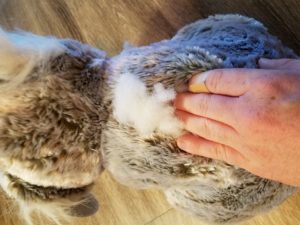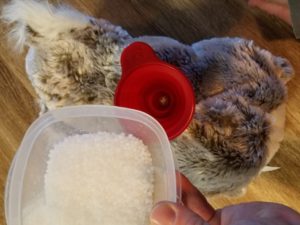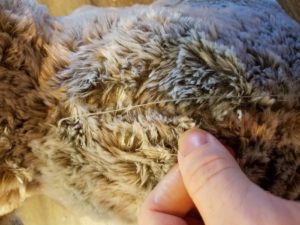How to Create a Weighted Animal to Improve Calming Strategies
by Thomas Stevens, OTR/L
Kids Place West Pediatric Occupational Therapist
Deep pressure can be very calming for children who have a hard time with self-regulation and attention to tasks. For many kids, bear hugs, weighted blankets, or weighted vests are tools that get this type of input. One additional tool is a weighted stuffed animal.
Deep pressure provided by a weighted animal is one of many sensory based calming strategies that can improve your child’s regulation and overall function at home. One advantage of a weighted animal is that it can be personalized to the child and may be a good starting point for children who have a hard time tolerating a vest or blanket being draped over them. There is versatility with the weighted animal in that it can be hugged, placed in the child’s lap, placed on the child’s back or chest as they lay down, or it can be safely thrown around during a meltdown. Additionally, a weighted animal allows for greater independence with self-regulation as it is easy to handle and carry around. It can be kept in a toy bin or with other stuffed animals so the child can take it whenever they feel they need this type of deep pressure input.
While there are options for weighted animals online, they can also be made at home for cheaper. Further, a home-made stuffed animal which the child chooses can increase compliance with use of the weighted animal for deep pressure input.
Supplies you will need:
Sewing needle
Thread
Seam ripper
Step 1: Cut open the back seem of the animal using a seem ripper.
Step 2: Remove as much stuffing as needed to add in the weighted material.
Step 3: Add weights.
For this animal I am using poly beads which can be found at most craft stores. Poly beads can simply be added directly into the stuffed animal. Other materials such as dry beans, sand, or large plastic pellets can be secured inside a sock that is sewn shut to keep these large items from shifting around and getting caught between the stuffing.
Step 4: Sew the animal shut again going up in the same direction as how the seem was cut and then following that pattern back down to where the seem was first cut, this should form an x like pattern and should make a secure stitch to keep the weighted animal together.
If you are concerned about your child having frequent meltdowns, poor regulation, and difficulty with attention, an occupational therapy evaluation may be beneficial to help determine what sensory strategies would best facilitate regulation throughout the day.











